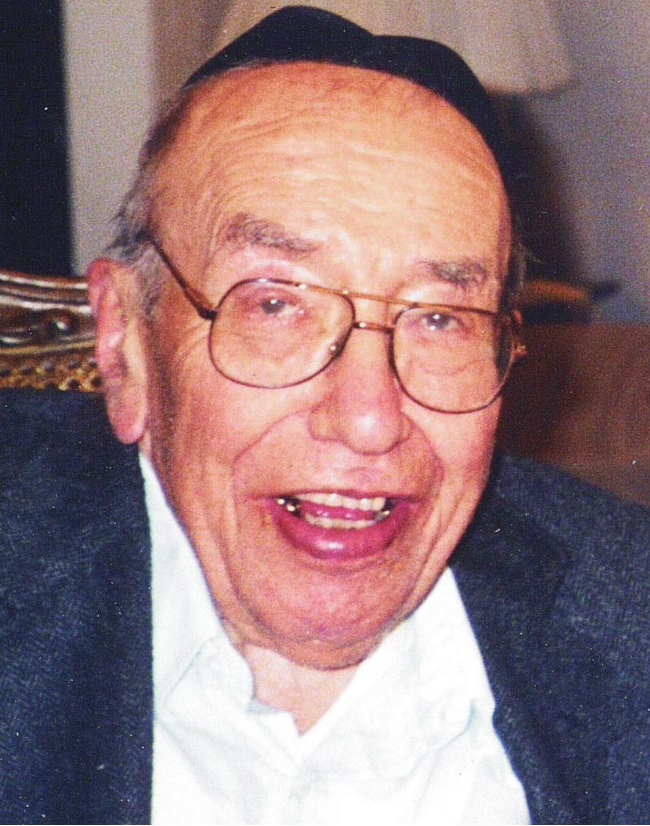Alvin Radkowsky
DOI: 10.1063/1.1554145
Alvin Radkowsky, a pioneer in nuclear power applications, died on 17 February 2002, in Tel Aviv, Israel, where he had made his home since 1972. He had been in the hospital for treatment of a pulmonary infection and died of apparent cardiac arrest as he was awaiting discharge.
Alvin was born on 30 June 1915 in Elizabeth, New Jersey, and graduated from the City College of New York in 1935 with a bachelor’s degree in electrical engineering. He had planned to major in mathematics or physics, but was advised that it would be easier for an electrical engineer to find work during the depression. Still, Alvin had to work in transient jobs (such as being a bellhop) before he landed an engineering post with the US Navy’s Bureau of Ships in Washington, DC, in 1938. He continued working for the navy for 34 years, until his retirement and relocation to Israel.
While working full time for the navy, Alvin pursued his graduate studies at night, and obtained an MS in physics in 1941 from George Washington University, where his adviser was Edward Teller. He then received his PhD in physics from the Catholic University of America in 1948 under the guidance of Karl Herzfeld. Alvin’s thesis, “Temperature Dependence of Electron Energy Levels in Solids,” gave rise to the “Radkowsky effect,” which is a broadening of the electron energy levels in crystalline insulators; that broadening results from collisions with the lattice. The broadening leads to a reduction in the width of the “forbidden” energy region between the valence and conduction bands.
Hyman Rickover recruited Alvin in 1948 to work in the naval reactors program, initially at the recently established Argonne National Laboratory. In order to learn reactor physics, Alvin traveled to Schenectady, New York, where he soon became Rick-over’s chief physicist and the de facto overseer of the physics efforts at General Electric Co’s Knolls Atomic Power Laboratory and Westinghouse Corp’s Bettis Laboratory, both of which designed submarine reactors under contract to the navy. Those programs, although successful in their own rights, also led to the eventual development of commercial light-water moderated reactors, pressurized water reactors by Westinghouse, and boiling water reactors by GE.
Although Alvin was not involved in the day-to-day R&D in the naval reactor program, he nonetheless made important technical contributions to that program and to the subsequent development of commercial nuclear power. Perhaps his significant contribution was adding burnable “poisons” to the fuel. As the fuel in a reactor is depleted and fission products build up, the reactivity decreases. If a neutron absorber (a poison) is appropriately incorporated into the reactor, its depletion through neutron absorption yields positive reactivity to partially compensate for the fuel burnup. Such reactivity compensation allows the number of moving control rods to be minimized and thus enhances the reactor’s reliability and increases its lifetime. Since the 1950s, some form of burnable poison has been a constant in light-water reactors.
During the 1950s, Alvin proposed the use of the “seed-and-blanket” core, in which fissionable material (enriched uranium) was inserted in lumps (the “seeds”) into a “blanket” of natural uranium (later thorium) to breed plutonium-239 or uranium-233, both fissionable isotopes. The improved neutron economy inherent in that design surprisingly gave a breeding ratio greater than unity, thus belying the conventional wisdom that breeding could occur only in fast reactors, which have serious coolant and control problems. In 1960 and later in 1977, Westinghouse built two seed-and-blanket cores in Shippingsport, Pennsylvania, although the design was shelved as nuclear power became politically incorrect in the US.
After Alvin’s emigration to Israel in the early 1970s, he became a professor of nuclear engineering at Tel Aviv University. In addition to the typical professorial duties, he embarked on an ambitious research program to develop a proliferation-free thorium breeder based on the seed-and-blanket concept. The thorium would contain a sufficient amount of depleted uranium to make reprocessing of the 233U unfeasible. Thus all the bred fuel would be consumed in situ, which would reduce both proliferation and waste storage problems and also would allow extraordinarily long burnups. Considerable interest in this design subsequently developed around the world; Alvin was engaged in a design project with the Russians at the time of his death.
During the early 1990s, Alvin served as consultant to the Taiwanese nuclear program, and his frequent travel there enabled him and his wife, Annette, to make side trips to exotic locales like Nepal, Bali, Hong Kong, and Tokyo. The Radkowskys were Orthodox Jews who adhered to their beliefs despite the complications those beliefs added to travel: They had to carry virtually all of their food (mostly canned fish) with them in suitcases. During his years with the navy, Alvin also had to travel, and generally ate only food he had brought from home. Twice he was forced to remain in airports to avoid flying on the Sabbath. Eventually, Alvin’s struggle with scoliosis forced him to retire in the late 1990s, but he continued to go to his office at Tel Aviv University regularly.
Alvin’s two great loves, physics and Judaism, defined his existence. His devotion to these two areas left him little time for anything else and led to a rather Spartan existence. He was a compassionate, caring human being who put his religious beliefs into daily practice and left this world a better place for having visited it.


More about the Authors
Paul Zweifel. Radford, Virginia, US .
